DAO STROM
an excerpt from Instrument
The follow excerpt is from Dao Strom’s Instrument, a multi-genre book of poetry and art, forthcoming from Fonograf Editions on November 3, 2020. In recent years, Poetry Northwest has published two previous excerpts from the book: “Traveler’s Ode” and “Flower Diatribe #1.” The album “Traveler’s Ode,” one track of which appears below, provides musical accompaniment to the book and can be found on Bandcamp or the Fonograf website.
[Wading into a new decade (ten miles of jungle, twenty+ river crossings, one night in a cave, chimes at the altar of the Highway of Horror, then lunch by the sea) forty-five years after the exodus]
It is said that trauma is stored in the body, the body retains memories the conscious mind does not remember, and thus it is that a body may go on acting—blindly, even needlessly—on events no longer extant.
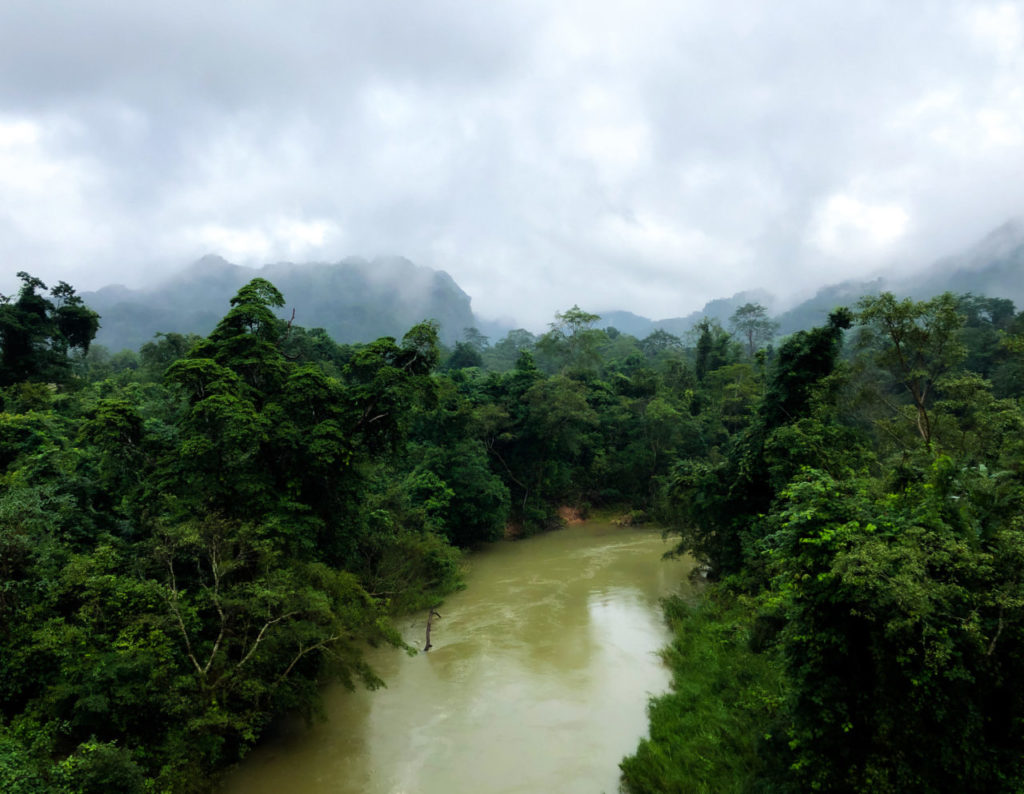
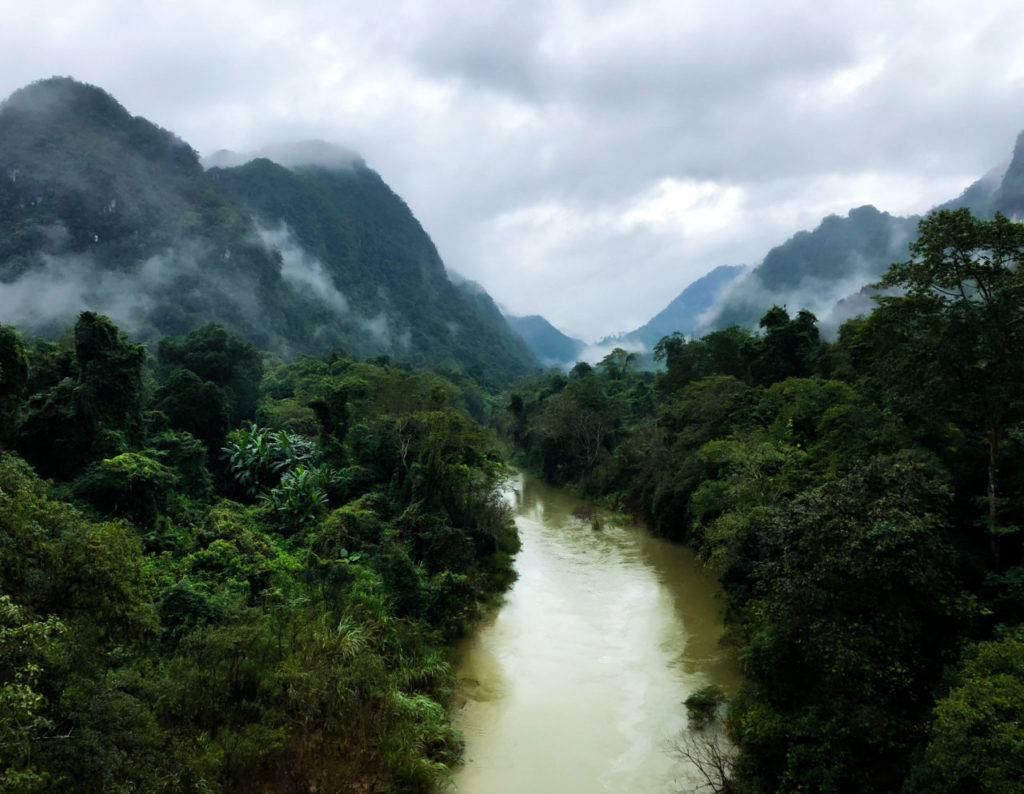
And so I had thought bringing my body to a particular place, or proximate region at least, might be one means of wringing out some of the trauma-habits associated with that place.
Two decades, three returns, still no language, still that refugee-romantic phenomenological hope of dragging back out into the light something lost, curative, possibly rectifying.
Injury carried within cave of self is by its nature: a non-extant a sunken topography.
What is the body of memory? What is the language of the body, that cannot conceive of time?
The language of memory meanwhile forms and re/forms body after etheric body out of echo after echo of no-longer-extant imaginaries—a collective ghost-nation body (re)forms = definition of ghost being being without body.
We chase the immaterial light.
And where do all the ghosts go once they are re-membered? Do they rise up to evaporate into the mist, find home again in the treetops? Do they exist in waiting only to fall down again (into our hair) when we pass beneath?
Often I wished I did not have a body so I did not have to travel back to places I could not re-member.
Inside the caves is actually a fervid deep lightlessness. Cave grows itself. Drip by drip.
In overlong precipitation and darkness.
The sole objective of water is to travel as easily as it can—downhill.
Rock conducive of both water and air: yields. Ever so interminably. Karst whorls.
A slow turbulent fetid beautifying/-defying intricately violent water-limestone dance ensues.
Karst worlds. The mountain never imagined what its hollows in yielding could hold.
While the machine of war was dropping enough bombs to re-carpet the jungle floor, this is what she kept hidden: with/in.
Music of rain on jungle canopy, descending.
I begin by extracting water out of the rock.
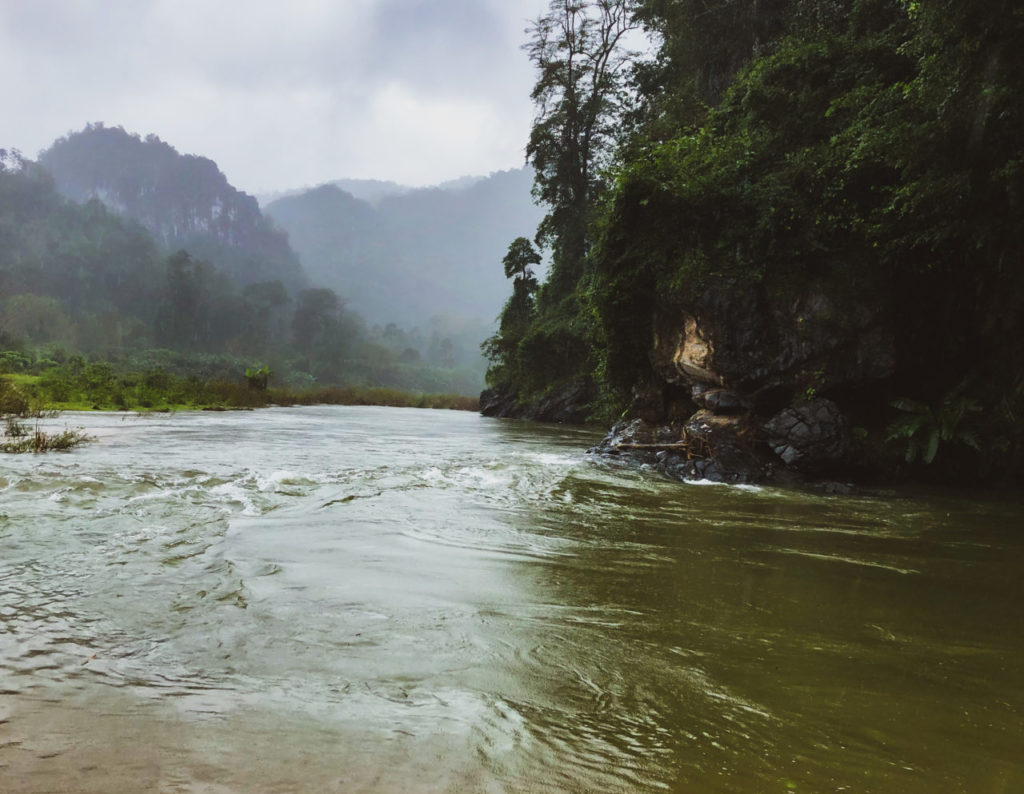
The day and night before our trek, the first day of a new decade forty-five years after the exodus, it rained heavily.
It is the same river, the guide named Đại explained, but we will cross it twenty-seven times. He is cheerful informing us that we can expect to get wet up to our thighs, maybe the waist. Nine hours into our purported four-to-five-hour hike, everyone is soaked head to toe, packs dripping, it is still raining, it is dark, they are telling us to turn down our headlamps to conserve battery power, and some of us would by now like to crawl under a leaf and just squat there in the mud until daybreak, leeches and all. But Vietnamese men do not understand halfway nor the precautionary principle of turning back. Decorum slips as evening falls; the guide who was previously serious and cordial in his explanations now exclaims “no idea!” when asked when will we reach the cave. Somewhere after seven or ten, I stopped counting which number crossing we were on. At each crossing we stand on the bank and wait while the guides and porters negotiate with the river, cajoling it with their ropes and their quick-swimming bodies, engineering how they intend to hand us, the visitors, across. They know how to work with the current: sometimes they send us straight across, sometimes at a diagonal, sometimes over a wider stretch because the current there is slower; the ropes and counterweight of their bodies—four or five men on either end of rope on each bank—the primary means by which we are stayed from the current. Water’s sole objective is to travel downhill and it will stop at nothing to do so. Finally we reach a point where Đại will declare, no more crossings. We squish through the mud in the dark, last bends of jungle path. The guides are standing at the point where the path ends at yet another expanse of water. Cave entrance on the far side. The men are standing together looking at the water, not speaking to each other. Headlamps lighting dim circles on the murky brown ripples: it is still raining. Đại, the one usually laughing and grinning, has a set to his jaw. We go through.
Later, when we ask him, he will admit that yes they were worried, but not for themselves. They were worried for us because they knew how tired we were.
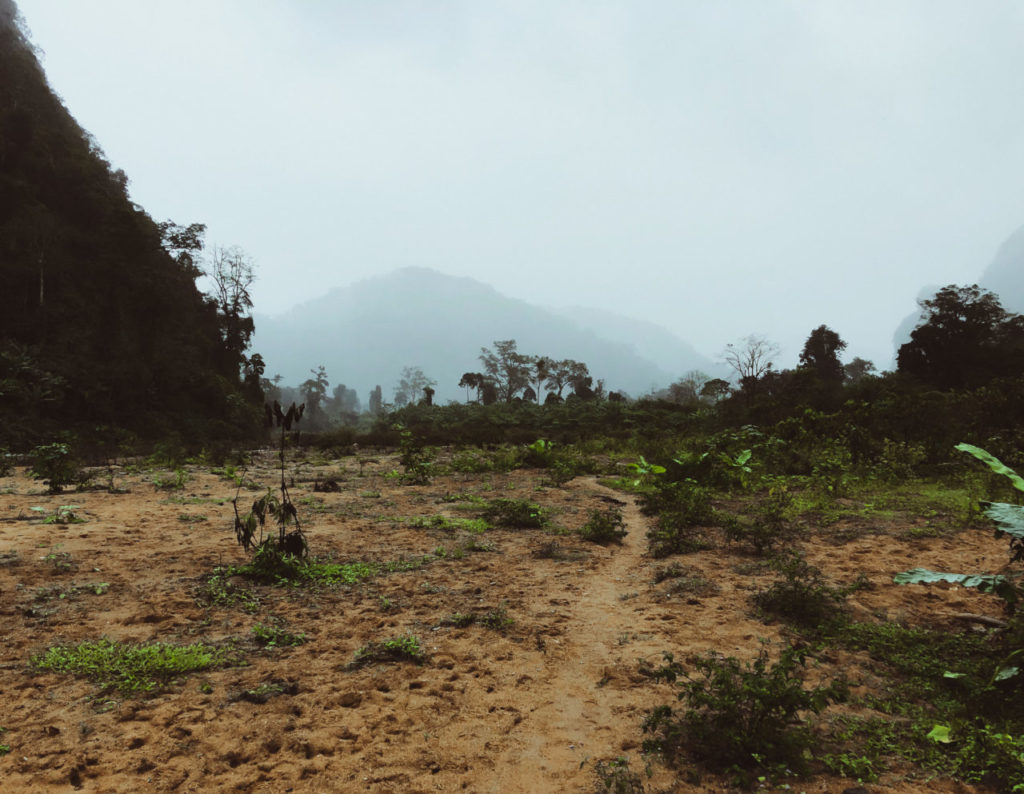
How many times must one cross a river—to reach the other side of it?
I begin by extracting water out of the rock.
In actuality it is not one cave but a vast system of hundreds of caves: the caves really a story of multiples. Of collectivity writ in soluble rock. So far about 300 caves have been explored, but it is suspected there are upwards of 600 or 700 in the entire system. Only a handful open to tourists. We are visiting just one cave, the third-largest. Bats keen for hours somewhere above, and all night a veil of watersong. The amygdala lies awake. But the truest message might be: my body’s decision to bleed on the first day of a new decade. I bled into those river crossings. It is true, the guide says, soldiers hid in the caves during the war, to shelter from what was dropped from above. But they did not go as far into the caves as they have gone now, did not have the lights and gear of today, and also they saw no profit in it. It was not until the British cavers in the 1980s caught wisp of a story about a wisp of cloud hovering too-low in the jungle, suggesting something inside breathing its own sky.
In the morning, sunlight enters the cave for patches of minutes at a time, sporadically. For a moment, for a minute or two, it dances high up on the cave wall in a ripple of green and gold, catches the rust tint in portions of the rocks. Sunbeam pours. Into the mouth.
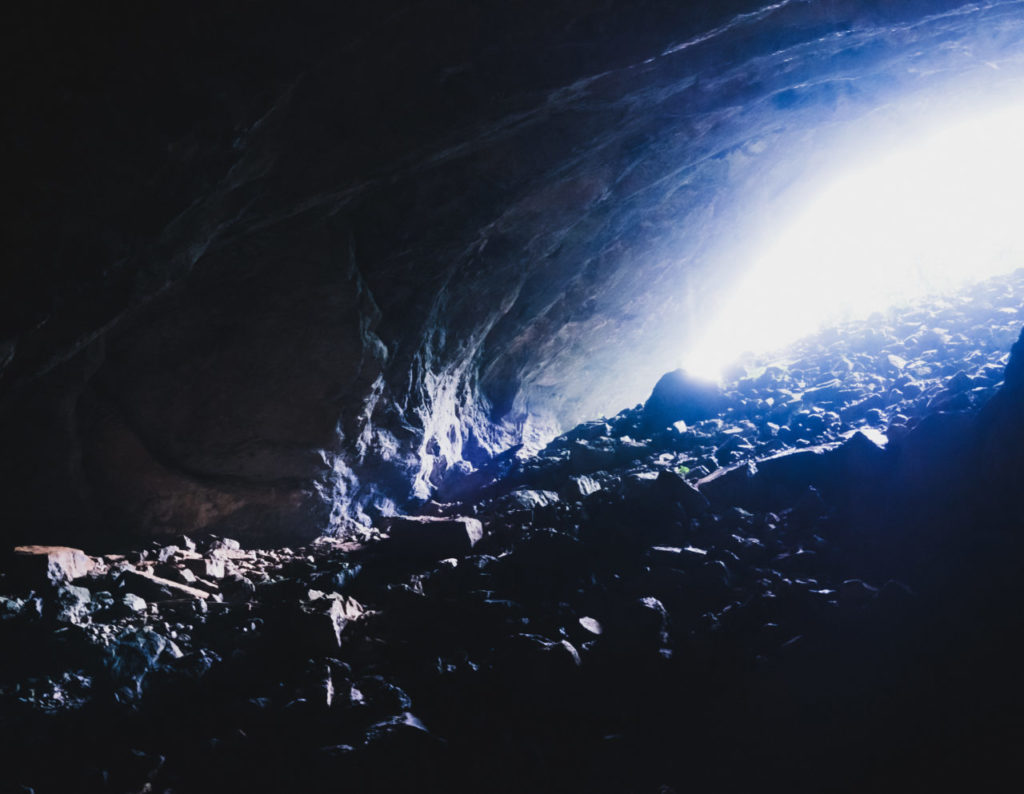
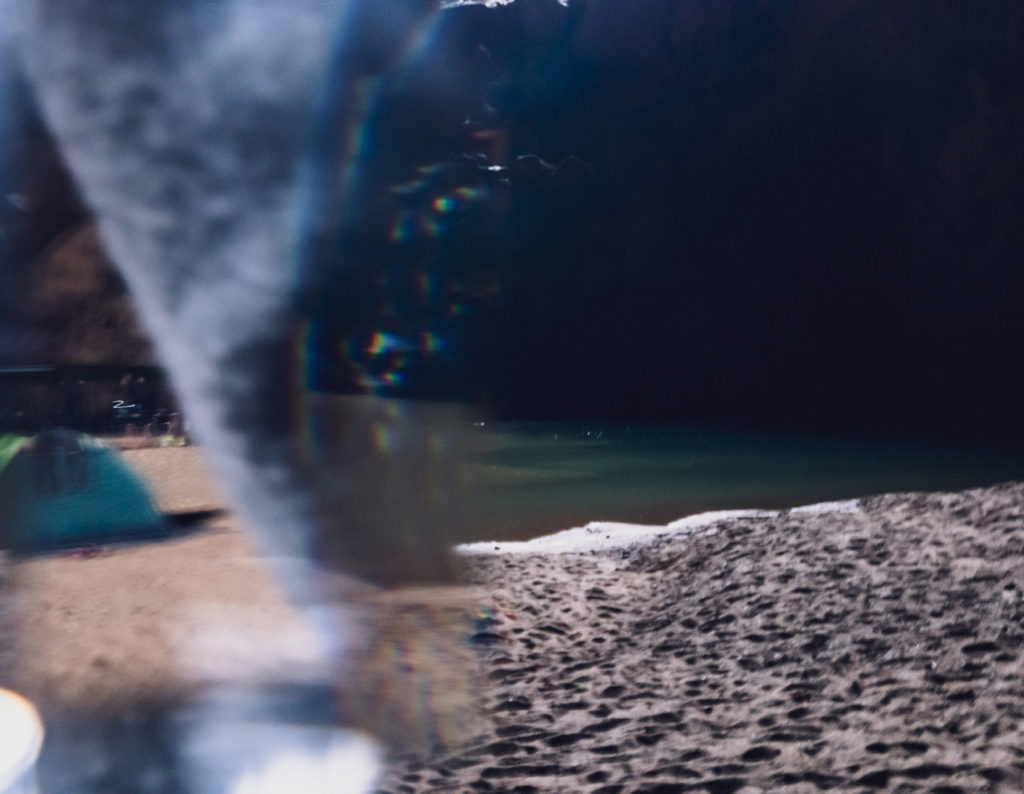
Inside the cave of the self the true contours of one’s <interior> await in darkness.
The contours inside a cave, although revealed once lit, have changed nothing
of themselves in becoming visible; the only change is to the accommodation of
our eyes.
This air will be changed over time, however, by these <visitations>.
Danger of <opening> inner self—to others?
What is preserved in the hewing of cavities. <Long ago.>
Long ago: her tears, riverine and acidic, bore <a fierce> interiority into the rock.
Long ago: we were born <borne>.
& what weight what act of gravity <from within or -out> will it take, I wonder:
for the ceiling of my heartthick chest eventually at last to—doline?
Light and air let in: <how long> before
a prehistoric grove blooms <anew> in the caverns of my overproductive gut?
Nothing changes,
everything changes. <Change is interminable.>
Lotic trails. Lentic sighs.
A deep, fierce, unnegotiable tenderness: runs through.
This is how I will survive <you>.
—
Dao Strom is the author of a bilingual poetry/art book, You Will Always Be Someone From Somewhere Else, (Hanoi: AJAR, 2018), a hybrid-form memoir, We Were Meant To Be a Gentle People, with song-cycle, East/West, and two books of fiction. She is a recipient of a 2016 Creative Capital Award and a 2020 Oregon Literary Arts Career Fellowship. She has received support from RACC, Precipice Fund, Oregon Arts Commission, NEA, and others.
